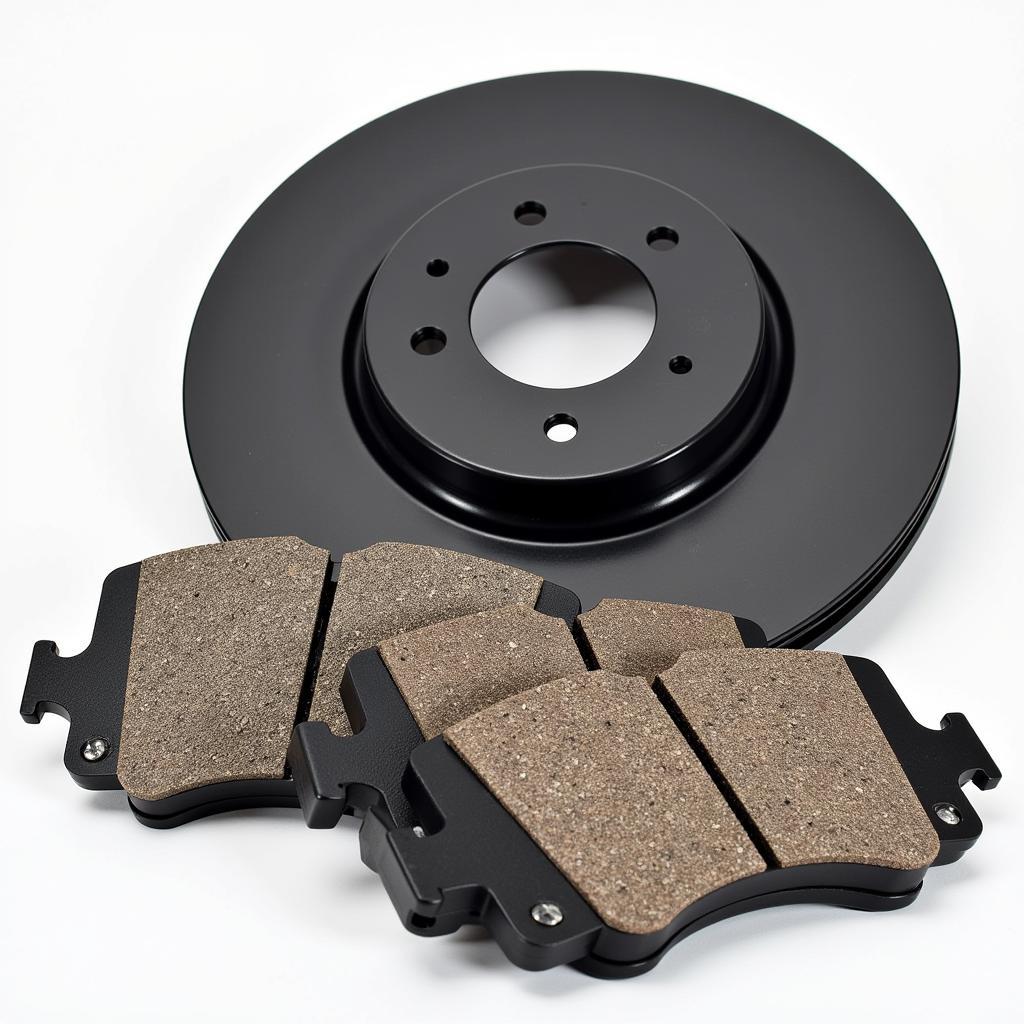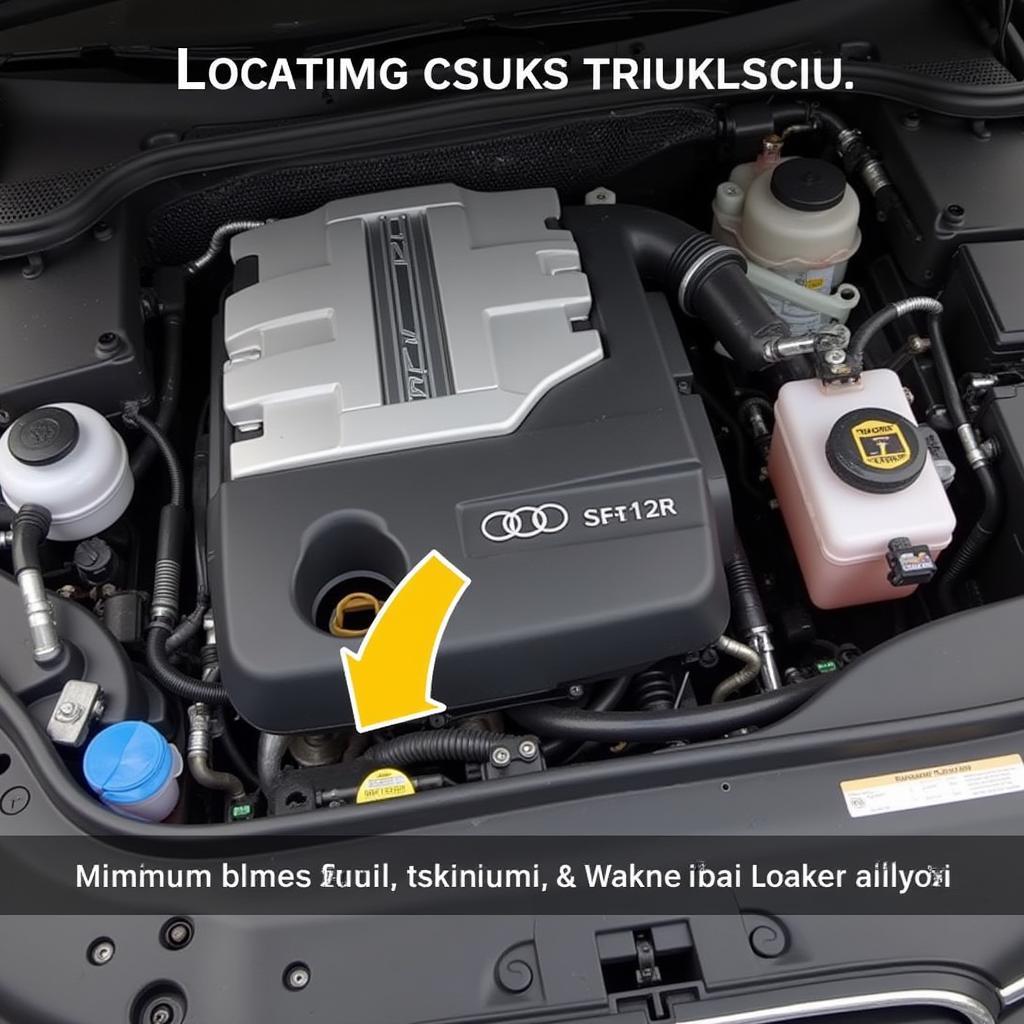One of the most unsettling experiences for an Audi driver is seeing a warning light pop up on the dashboard. While some warnings are merely informational, others, like the brake pad warning light, signal a potential safety hazard. This comprehensive guide will explore everything you need to know about “Audi warning lights brake pads,” empowering you to address the issue and stay safe on the road.
Understanding Your Audi’s Brake Pad Warning Light
Your Audi is equipped with sensors that continuously monitor the thickness of your brake pads. When the pads wear down to a certain level, the brake pad warning light, usually a circle with dotted lines on either side and an exclamation mark in the center, illuminates on your dashboard.
This light is your car’s way of telling you it’s time for a brake inspection and likely a brake pad replacement. Ignoring this warning can lead to further damage to your braking system, compromising your safety on the road.
Common Causes of Audi Brake Pad Warning Light
While worn brake pads are the most common culprit behind the warning light, several other factors can trigger it:
- Worn Brake Pad Sensors: The sensors themselves can wear out or become damaged over time, triggering a false warning.
- Damaged Brake Lines: A leak or damage to the brake lines can cause a drop in brake fluid pressure, activating the warning light.
- Faulty ABS System: A problem with your Anti-lock Braking System (ABS) can also illuminate the brake pad warning light.
- Low Brake Fluid: Brake fluid is crucial for a functioning brake system. If the fluid level is low, it could signal a leak or another issue.
What to Do When Your Audi Brake Pad Warning Light Comes On
- Don’t Panic: While a serious issue, a glowing brake pad warning light doesn’t necessarily mean immediate danger. Stay calm and pull over when it’s safe.
- Check Your Brake Fluid: Carefully open the brake fluid reservoir (refer to your owner’s manual for its location). If the fluid is low, it needs to be topped up. However, low fluid could indicate a leak, which requires immediate professional attention.
- Inspect Your Brake Pads: If you’re comfortable doing so, you can visually check your brake pads. If they appear thinner than ¼ inch, it’s time for a replacement.
- Schedule an Inspection: Whether you identify the issue or not, it’s crucial to schedule an inspection with a qualified Audi mechanic immediately. They have the diagnostic tools and expertise to identify the root cause and perform the necessary repairs.
Importance of Timely Brake Pad Replacement
Delaying brake pad replacement can lead to several issues:
- Reduced Braking Efficiency: Worn brake pads decrease your car’s ability to stop effectively, increasing stopping distance and the risk of accidents.
- Damage to Rotors: Driving with worn pads can cause damage to the brake rotors, leading to costly repairs.
- Brake Failure: In extreme cases, ignoring the warning light can lead to complete brake failure, putting you and others on the road at serious risk.
Tips to Prolong the Life of Your Audi’s Brake Pads
- Smooth Braking: Avoid harsh braking whenever possible. Gradually slowing down reduces wear and tear on your brake pads.
- Maintain a Safe Distance: Keeping a safe distance from other vehicles allows for more time to react and brake smoothly.
- Lighten Your Load: Carrying excessive weight puts extra strain on your braking system, leading to faster brake pad wear.
- Regular Inspections: Adhering to your Audi’s recommended maintenance schedule ensures your brakes are regularly inspected and any issues are caught early on.
 New Audi Brake Pads
New Audi Brake Pads
Expert Insight
“Many Audi owners underestimate the importance of timely brake pad replacement,” says Mark Stevenson, a veteran Audi mechanic with over 20 years of experience. “It’s not just about the pads; it’s about the safety of you and your passengers. A small investment in brake maintenance can save you from costly repairs and potential accidents down the line.”
Conclusion
The brake pad warning light in your Audi is a crucial safety feature, not to be ignored. By understanding its meaning, responding promptly, and adopting preventative measures, you can ensure optimal braking performance and, most importantly, stay safe on the road. Remember, if you’re ever unsure about your Audi’s brakes, it’s always best to err on the side of caution and consult a qualified mechanic.
FAQs
1. How much does it cost to replace brake pads on an Audi?
The cost of brake pad replacement for an Audi can vary depending on the model, labor costs, and the type of brake pads used. On average, you can expect to pay between $300 and $600 per axle.
2. How often should I replace my Audi’s brake pads?
There’s no one-size-fits-all answer, as brake pad lifespan depends on driving habits and conditions. However, it’s generally recommended to have your brake pads inspected every 10,000 miles and replaced every 20,000-70,000 miles.
3. Can I drive my Audi with the brake pad warning light on?
While you might be able to drive for a short distance with the warning light on, it’s highly discouraged. Driving with worn brake pads compromises your safety and can lead to further damage to your braking system.
4. What happens if I ignore the brake pad warning light?
Ignoring the warning light can lead to reduced braking efficiency, damage to rotors, and, in extreme cases, complete brake failure. This puts you and other road users at risk.
5. How can I tell if my Audi needs new brake pads?
Aside from the warning light, signs of worn brake pads include squealing or grinding noises when braking, vibrations in the brake pedal, and a longer stopping distance.
Don’t forget to check out these related articles for further information:
- multiple warning lights esp asp brake pads audi s5 b8
- audi brake pads warning light
- turn off brake warning light 2009 audi a6
Your safety is our priority!



